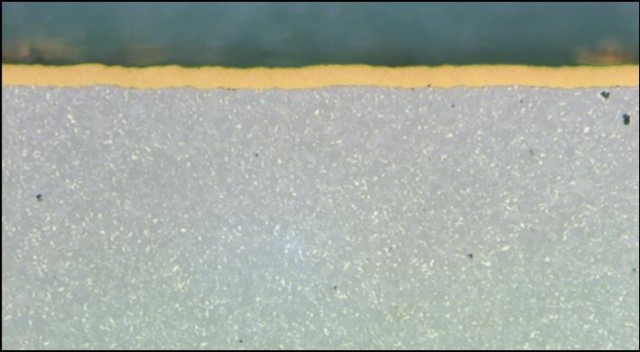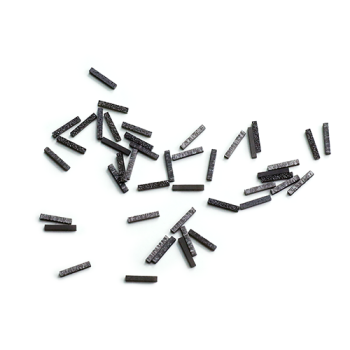Introduction to CVD Coating on Titanium Alloys
Process Overview
Chemical Vapor Deposition (CVD) coating of titanium alloys is a sophisticated surface treatment method that significantly enhances the properties of titanium alloys. This advanced technology involves the transformation of chemical precursors in gaseous form into solid coatings on the surface of titanium alloys through a series of high-temperature, low-pressure processes. The fundamental principle behind CVD is the conversion of these gaseous precursors into a solid state, which then adheres to the titanium substrate to form a durable and protective coating.
The process of CVD coating can be broken down into several key steps:
-
Precursor Selection: Choosing the appropriate chemical precursors that will be used to form the desired coating. These precursors are typically gases or gas mixtures that contain the elements necessary for the coating.
-
Gas Introduction: The selected precursors are introduced into the CVD reactor chamber. This step is crucial as it determines the composition and quality of the final coating.
-
Surface-Mediated Reactions: Once the precursors are introduced, they undergo a series of chemical reactions on the surface of the titanium alloy. These reactions are facilitated by the high temperatures and low pressures maintained within the reactor.
-
Film Deposition: The result of these surface-mediated reactions is the deposition of a solid film on the titanium alloy surface. This film forms the protective coating that enhances the alloy's properties.
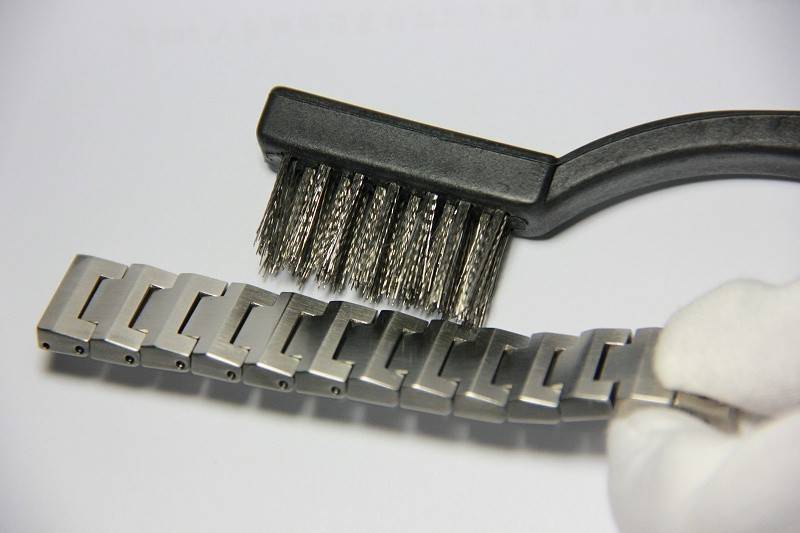
The high-temperature, low-pressure conditions in the CVD process are essential for ensuring the uniformity and adhesion of the coating. These conditions allow for precise control over the coating's thickness and composition, which is critical for achieving the desired improvements in wear resistance, corrosion resistance, and thermal stability.
In summary, CVD coating of titanium alloys is a multi-step process that leverages high-temperature, low-pressure conditions to convert gaseous precursors into solid, protective coatings. This method is widely recognized for its ability to significantly enhance the performance and longevity of titanium alloys in various applications.
Advantages of CVD Coatings
CVD coatings on titanium alloys offer a multitude of benefits that enhance their performance across various applications. One of the primary advantages is improved wear resistance. These coatings significantly reduce friction and prevent premature failure of tools or components, thereby extending their operational lifespan. This enhancement not only leads to increased productivity but also results in substantial cost savings.
Another key benefit is enhanced corrosion resistance. CVD coatings provide a protective barrier against corrosive environments, which is particularly crucial in applications where exposure to chemicals or aggressive substances is inevitable. This protection ensures the longevity and reliability of the coated components.
Thermal fatigue resistance is yet another significant advantage. CVD coatings help in maintaining the structural integrity of titanium alloys under thermal stress, making them ideal for high-temperature applications. This resistance to thermal fatigue ensures that the materials can withstand repeated heating and cooling cycles without degrading.
Moreover, CVD coatings contribute to improved biocompatibility, making them highly suitable for biomedical applications. This property is essential for implants, as it reduces the risk of adverse reactions and promotes better integration with the human body.
In summary, CVD coatings on titanium alloys offer a comprehensive suite of benefits, including superior wear and corrosion resistance, enhanced thermal fatigue resistance, and improved biocompatibility. These advantages make CVD coatings a preferred choice for a wide array of industrial and biomedical applications.
Applications of CVD Coatings
Cutting Tools
CVD coatings have become indispensable in the manufacturing of cutting tools, offering significant enhancements in tool performance and operational efficiency. By applying CVD coatings, manufacturers can significantly extend the lifespan of cutting tools, thereby reducing the frequency of tool replacements and minimizing downtime. This not only boosts productivity but also lowers overall production costs.
The benefits of CVD coatings in cutting tools are manifold. Firstly, these coatings enhance the tool's resistance to wear, which is crucial in high-speed machining operations where tools are subjected to extreme mechanical stresses. Secondly, CVD coatings provide superior thermal stability, protecting the tool from thermal degradation during prolonged use. This thermal stability is particularly advantageous in industries that require continuous cutting operations, such as automotive and aerospace manufacturing.
Moreover, CVD coatings contribute to improved surface finish of the machined parts, which is essential for achieving high-quality end products. The ability to maintain a consistent surface finish over extended periods ensures that the final products meet stringent quality standards. This consistency in quality reduces the need for secondary operations, further streamlining the manufacturing process and lowering costs.
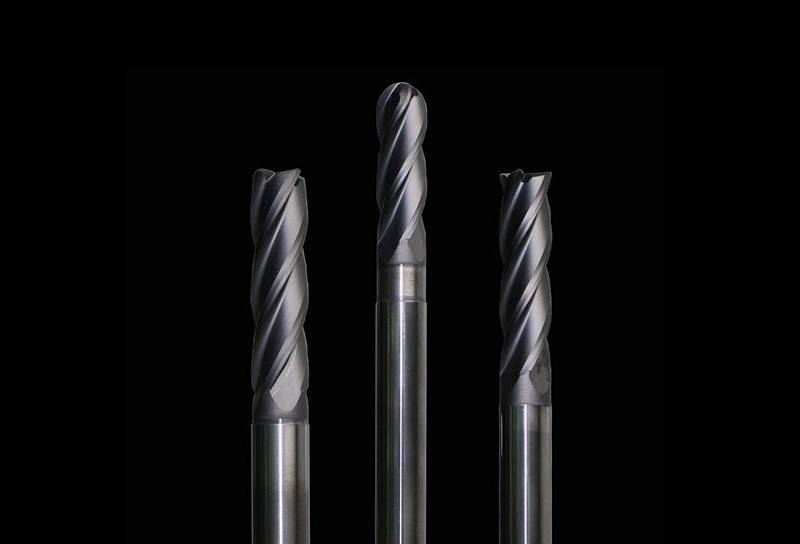
In summary, the integration of CVD coatings in cutting tools revolutionizes the manufacturing sector by enhancing tool durability, thermal stability, and surface finish, ultimately leading to cost savings and improved product quality.
Biomedical Field
CVD technology has revolutionized the biomedical field by enabling the creation of advanced biomedical implants with enhanced properties. These implants, coated with materials deposited through CVD processes, exhibit superior biocompatibility and wear resistance, crucial for their long-term performance within the human body.
Key Benefits of CVD-Coated Implants
- Enhanced Biocompatibility: The coatings formed through CVD processes are meticulously designed to minimize adverse reactions with human tissues, thereby reducing the risk of implant rejection.
- Improved Wear Resistance: The robust coatings significantly enhance the durability of implants, ensuring they withstand the mechanical stresses encountered in various medical applications.
Specific Applications
- Orthopedic Implants: CVD coatings are extensively used in orthopedic implants, such as hip and knee replacements, where biocompatibility and wear resistance are paramount.
- Dental Implants: In dental applications, CVD-coated titanium implants provide better integration with bone tissues, promoting faster healing and longer-lasting results.
Research and Development
Ongoing research focuses on developing new CVD technologies, such as MOCVD, PCVD, and LCVD, to further improve the deposition efficiency and coating quality, ensuring even greater benefits for biomedical applications.
Chemical Reaction Process
Steps in CVD Coating
The preparation of titanium alloy CVD coatings is a multifaceted process that involves several critical steps. Initially, the selection of appropriate precursors is crucial, as these materials dictate the chemical composition and properties of the final coating. Once selected, these precursors are converted into a gaseous state, often through heating, and then introduced into the reaction chamber.
Within the chamber, the gas-phase precursors undergo a series of complex chemical reactions. These reactions can be broadly categorized into gas-phase reactions and surface-mediated reactions. The gas-phase reactions produce primary reactants and by-products, which then diffuse towards the substrate. Upon reaching the substrate, these reactants undergo chemisorption and diffusion, forming a stable layer of material on the surface.
The surface-mediated reactions are particularly important as they determine the nucleation and growth of the coating. These reactions often involve the formation of critical-size clusters, which eventually grow into stable crystals. The substrate's size, temperature, and chemical composition, along with the deposition process parameters such as chamber temperature and gas flow rate, significantly influence the outcome of these reactions.
Lastly, the deposition process itself is meticulously controlled to ensure the desired thickness and uniformity of the coating. Advanced CVD systems often employ digital flow controllers or pressure-flow controllers to maintain precise control over the gas evaporation rate, which is essential for achieving the specific characteristics of the coating. This careful control ensures that the final product meets the desired microstructural, mechanical, and corrosion resistance properties.
Optimization of Deposition Parameters
The optimization of deposition parameters in Chemical Vapor Deposition (CVD) is a critical step that directly influences the quality and performance of the resulting coatings. This process involves several key stages, each of which requires careful consideration and precise control.
Determining the Optimization Goal
The first step in optimizing deposition parameters is to clearly define the optimization goal. This goal could be to enhance the coating's wear resistance, improve its corrosion resistance, or achieve better thermal stability. By setting a specific objective, researchers can tailor the subsequent steps to achieve the desired outcomes.
Single-Factor Optimization
Once the goal is established, the next phase involves single-factor optimization. This method involves systematically varying one parameter at a time while keeping all other parameters constant. Common parameters include temperature, pressure, precursor concentration, and flow rates. By isolating each factor, researchers can identify its individual impact on the coating's properties.
Response Surface Methodology
Following single-factor optimization, response surface methodology (RSM) is employed to explore the combined effects of multiple parameters. RSM uses statistical models to predict the optimal settings for all parameters simultaneously. This approach helps in identifying the most effective combination of variables that will yield the best coating performance.
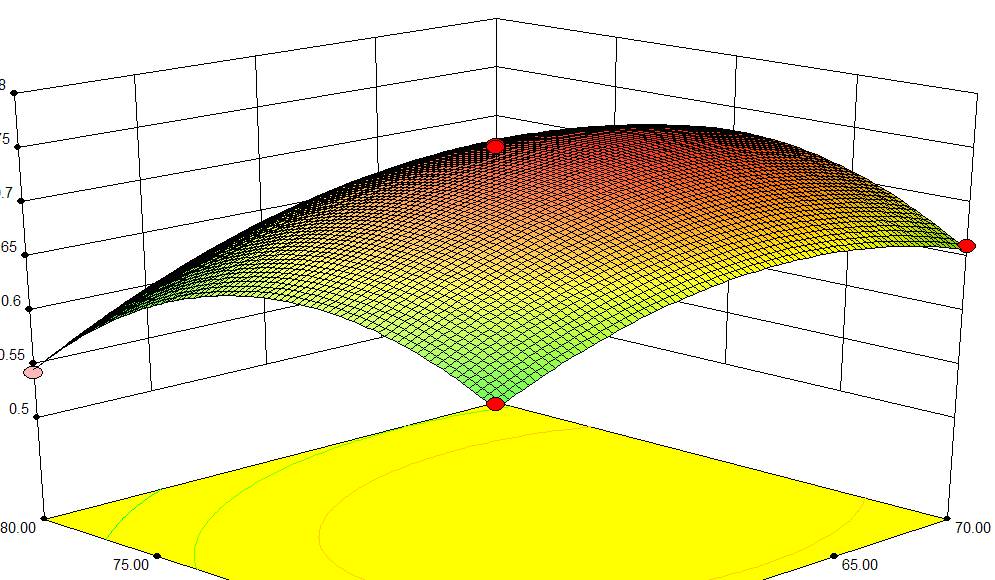
Evaluation of Deposition Rates
Finally, the deposition rates are evaluated to ensure they meet the desired criteria. This evaluation includes measuring the rate at which the coating is deposited on the substrate and assessing the uniformity of the coating thickness. High deposition rates are often preferred as they can reduce production time and costs, but they must be balanced against the need for high-quality coatings.
By carefully optimizing these parameters, researchers can achieve coatings with superior properties, making CVD a highly effective method for enhancing the performance of titanium alloys in various applications.
Advantages and Disadvantages vs. PVD Coatings
Advantages of CVD Coatings
CVD (Chemical Vapor Deposition) coatings are renowned for their superior step coverage and precise thickness control, which are critical for achieving uniform protection and performance across complex geometries. This precision is particularly advantageous in industries where surface integrity is paramount, such as aerospace and medical device manufacturing.
Moreover, the versatility of CVD coatings is unparalleled, as they can be applied to a diverse range of materials, including metals, ceramics, and polymers. This adaptability significantly broadens their application spectrum, from enhancing the durability of cutting tools to improving the biocompatibility of medical implants.
In addition to their versatility, CVD coatings offer exceptional wear resistance, which is essential for tools and components subjected to high mechanical stress. By reducing friction and preventing premature failure, these coatings extend the operational life of tools, thereby increasing productivity and reducing maintenance costs.
Chemical resistance is another key advantage of CVD coatings. They provide a robust barrier against corrosive environments, protecting the underlying substrate from degradation due to exposure to harsh chemicals. This feature is particularly beneficial in industries such as chemical processing and oil exploration, where equipment must withstand aggressive substances.
Furthermore, CVD coatings are integral in the manufacturing of forming and stamping tools. By enhancing surface hardness and wear resistance, these coatings enable tools to withstand the high pressures and abrasive forces inherent in these applications, leading to improved tool performance and longevity.
In the realm of solid carbide tools, including end mills, drills, and reamers, CVD coatings play a crucial role in enhancing tool performance. These coatings not only extend tool life but also improve cutting efficiency, resulting in higher productivity and lower production costs.
| Advantage | Application Examples |
|---|---|
| Superior Step Coverage | Aerospace components, Medical devices |
| Versatility | Cutting tools, Medical implants |
| Wear Resistance | Forming and stamping tools, Solid carbide tools |
| Chemical Resistance | Chemical processing equipment, Oil exploration |
The combination of these advantages makes CVD coatings an indispensable technology across numerous industries, driving innovation and performance enhancement in various applications.
Disadvantages of CVD Coatings
While CVD coatings offer significant advantages, particularly in enhancing wear and corrosion resistance, they are not without their drawbacks. One of the most notable disadvantages is the requirement for high deposition temperatures, often reaching up to 1000°C. This necessitates specialized equipment and controlled environments, making the process more complex and costly compared to alternatives like PVD coatings.
Moreover, the equipment required for CVD processes is intricate and demands precise calibration to ensure the safety and efficacy of the coating process. The high temperatures involved not only increase energy consumption but also pose potential risks due to the volatile substances used in the chemical reactions. This complexity translates into higher operational and maintenance costs, which can be a significant deterrent for smaller manufacturers or those with limited budgets.
Another critical issue is the surface quality of the resulting coatings. CVD coatings tend to be rougher than those produced by PVD methods. This roughness can be detrimental in applications where a smooth surface is essential, such as in biomedical implants or precision cutting tools. The rougher texture can lead to increased friction and wear on mating surfaces, potentially reducing the overall lifespan and performance of the coated components.
Additionally, CVD-coated equipment is often more fragile than its PVD-coated counterparts due to residual tensile stress generated during the deposition process. This fragility can limit the mechanical durability of the coated tools, especially in high-stress environments like heavy-duty machining or surgical applications.
In summary, while CVD coatings provide superior resistance to wear and corrosion, the high temperatures, complex equipment, and resulting roughness and fragility of the coatings present significant challenges that must be carefully managed.
Latest Research Progress
Nano TiN Alloy Coatings
Research on nano TiN alloy coatings has revealed significant enhancements in wear and corrosion resistance, particularly with an increase in TiN content. These coatings, which include compounds like Aluminium Titanium Nitride (AlTiN) and Titanium Aluminium Nitride (TiAlN), are meticulously designed to augment various mechanical properties. Key attributes of these coatings include superior wear resistance, corrosion resistance, scratch resistance, hardness, surface roughness, thermal shock resistance, chemical resistance, and oxidation resistance.
The performance of these coatings is heavily influenced by the Ti/Al ratio within the Ti-Al-N composition. Notably, the mechanical properties and oxidation resistance are profoundly affected by variations in the Al content. For instance, the addition of Al to TiN can transform the structure of the compound to Face-Centered Cubic (FCC), which is particularly advantageous in environments requiring high-speed cutting without lubrication.
In the biomedical field, titanium is often coated on surgical tools and medical implants due to its non-reactive and biocompatible nature. The Ti-Al-N compound stands out as a highly effective and cost-efficient coating material in contemporary technological applications. It offers superior tribological and mechanical properties compared to other coatings, making it ideal for protecting components and machining tools. Its enhanced resistance to oxidation and high hardness further underscore its utility.
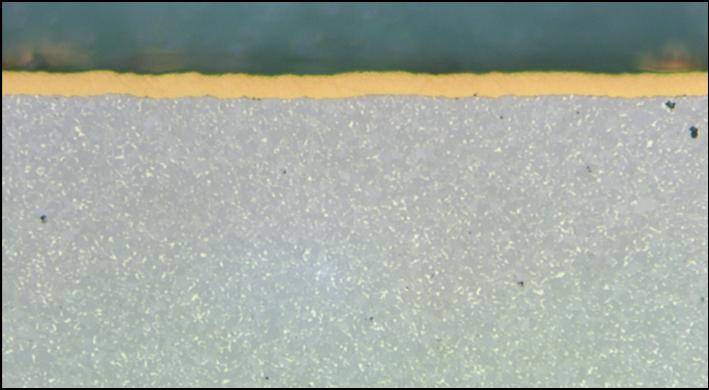
Recent observations indicate that nanostructured Ti-Al-N coatings are increasingly preferred over traditional TiN coatings to achieve even higher hardness and better mechanical properties. This shift underscores the evolving demands for more robust and durable coatings in various industrial and biomedical applications.
Development of New CVD Technologies
New CVD technologies, such as Metal-Organic Chemical Vapor Deposition (MOCVD), Plasma-Enhanced Chemical Vapor Deposition (PCVD), and Laser Chemical Vapor Deposition (LCVD), are revolutionizing the deposition process. These advancements not only enhance deposition efficiency but also significantly improve the quality and uniformity of the coatings.
One of the key innovations in CVD technology is the use of alternative precursor gases, such as Metal-Organic Frameworks (MOFs). MOFs are highly porous materials that can store and release gases efficiently, making them ideal for applications in gas separation, storage, and sensing. MOCVD, in particular, leverages metal-organic compounds as precursor gases, which opens up new possibilities in the fabrication of advanced materials like III-V semiconductors.
Another critical development is the integration of advanced control systems to monitor and adjust the deposition process in real-time. Feedback control systems can dynamically manage the flow rate of precursor gases and the temperature of the reaction chamber, ensuring consistent film properties and minimizing material waste. This level of precision and control is essential for achieving high-quality, uniform coatings that meet the stringent requirements of various industrial applications.
These innovations collectively push the boundaries of what CVD technology can achieve, making it a cornerstone in the development of next-generation materials and devices.
Inorganic Chalcogenide Crystal Films
Chemical Vapor Deposition (CVD) technology has emerged as a pivotal method for the synthesis of inorganic chalcogenide crystal films, offering a pathway to produce high-quality, large-size films with exceptional properties. These films are characterized by their uniform thickness, high crystallinity, and the ability to be tailored for specific applications, making them ideal for various industries including optoelectronics and photovoltaics.
The CVD process for chalcogenide films involves the introduction of gas-phase precursors, which undergo surface-mediated reactions to form solid materials at elevated temperatures and reduced pressures. This controlled environment ensures the precise deposition of the film, allowing for the growth of large-area, defect-free crystals. The ability to manipulate deposition parameters such as temperature, pressure, and precursor concentration further enhances the quality and properties of the resulting films.
In addition to their structural integrity, inorganic chalcogenide crystal films prepared via CVD exhibit superior optical and electronic properties. These films are known for their high transparency, low absorption coefficients, and excellent thermal stability, making them suitable for advanced applications in photovoltaic cells, optical sensors, and semiconductor devices. The scalability of the CVD process also ensures that these films can be produced in commercial quantities, meeting the demands of emerging technologies.
Moreover, the versatility of CVD technology allows for the incorporation of various dopants and additives, enabling the customization of film properties to meet specific application requirements. This flexibility is particularly advantageous in the development of next-generation devices, where precise control over material properties is essential.
In summary, CVD technology not only enables the growth of high-quality, large-size inorganic chalcogenide crystal films but also provides the tools necessary for their optimization and application in cutting-edge technologies.
Applications in Biomedical Field
Surface Modification of Implants
Chemical Vapor Deposition (CVD) coatings play a pivotal role in the surface modification of medical implants, enhancing both their biocompatibility and mechanical properties. The process involves the deposition of a thin, uniform layer of material onto the implant surface, which can significantly improve the implant's interaction with biological tissues and its overall durability.
| Property Improved | Description |
|---|---|
| Biocompatibility | CVD coatings reduce the risk of adverse reactions by creating a bioinert layer, minimizing the body's immune response. |
| Mechanical Strength | Enhanced mechanical properties, such as hardness and wear resistance, ensure the implant can withstand the stresses of daily use without degradation. |
CVD technology is particularly advantageous for biomedical applications due to its ability to deposit coatings at high temperatures and low pressures, which allows for precise control over the coating's thickness and composition. This precision is crucial for medical implants, where even minor variations in surface properties can have significant implications for patient outcomes.
Moreover, the versatility of CVD coatings enables the incorporation of various materials, such as titanium nitride (TiN) and tantalum carbide (TaC), which are known for their superior biocompatibility and mechanical properties. These materials not only improve the implant's resistance to corrosion and wear but also promote better integration with surrounding tissues, facilitating faster recovery and longer implant lifespan.
In summary, the use of CVD coatings for surface modification of implants represents a significant advancement in the field of biomedical engineering, offering enhanced performance and reliability for medical devices.
Cell Proliferation Promotion
Coatings such as TaC, TaCN, and TaN play a pivotal role in enhancing cell adhesion and proliferation, which are crucial for effective bone tissue regeneration. These coatings, applied through Chemical Vapor Deposition (CVD) techniques, create a conducive microenvironment that supports cellular activities necessary for tissue repair and growth.
The biocompatibility of these coatings is not just limited to passive resistance to corrosion and wear; they actively promote cellular interactions. For instance, TaC coatings have been shown to provide a stable surface that encourages the attachment of osteoblasts, the cells responsible for bone formation. This stability is achieved through the precise control of surface roughness and chemical composition, which are optimized during the CVD process.
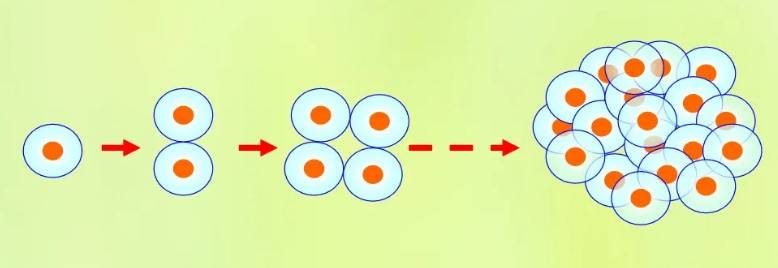
Moreover, the proliferation of these cells is significantly boosted, leading to faster and more robust bone tissue regeneration. Studies have indicated that TaCN and TaN coatings, in particular, exhibit superior performance in promoting cell proliferation compared to other materials. This is attributed to their ability to maintain a balance between providing sufficient mechanical support and offering a surface that is conducive to cellular activities.
In summary, the use of TaC, TaCN, and TaN coatings in biomedical applications not only enhances the mechanical properties of implants but also actively contributes to the regeneration of bone tissue by promoting cell adhesion and proliferation.
Joint Component Applications
Titanium alloy hard coatings, particularly those applied through Chemical Vapor Deposition (CVD), are integral to the performance and longevity of joint components in various applications. These coatings significantly enhance the friction resistance of the joint components, thereby reducing wear and tear, which is crucial in high-stress environments such as orthopedic implants.
In the biomedical field, the use of CVD-coated titanium alloys in joint components is not merely a matter of durability; it also enhances the overall performance and reliability of the implants. The improved friction resistance ensures smoother articulation, which is essential for the natural movement of joints. This enhancement directly correlates with an extended implant life, reducing the frequency of replacements and associated healthcare costs.
Moreover, the biocompatibility of these coatings plays a vital role in the acceptance of the implant by the human body. By minimizing the risk of adverse reactions and promoting better integration with the surrounding tissues, CVD-coated titanium alloys offer a superior solution for joint replacements. This dual benefit of enhanced mechanical properties and improved biological interaction makes CVD-coated titanium alloys an ideal choice for joint component applications.
Titanium Nitride Coatings
Titanium Nitride (TiN) coatings, predominantly prepared through Chemical Vapor Deposition (CVD), significantly enhance the performance of titanium implants by augmenting their corrosion resistance and biocompatibility. This advanced surface treatment method involves high-temperature reactions between titanium tetrachloride (TiCl4), nitrogen (N2), and hydrogen (H2) to form a durable TiN layer, as illustrated by the chemical equation:
[ 2TiCl_4 + N_2 + 4H_2 \rightarrow 2TiN + 8HCl ]
The application of TiN coatings through CVD extends beyond medical implants to various industrial sectors, including cutting tools, electronics, and optics. Notably, TiN coatings are second only to diamond in hardness, offering exceptional wear resistance and oxidation protection. This makes them ideal for applications requiring high mechanical endurance, such as cutting tools and medical components.
In the biomedical field, the biocompatibility of TiN coatings is crucial for reducing the risk of implant rejection and promoting osseointegration. The high-temperature CVD process ensures a robust and uniform coating, which is essential for the long-term stability of medical implants. Despite the higher processing temperatures required for CVD compared to Physical Vapor Deposition (PVD), the benefits of improved step coverage and thickness control make CVD an advantageous choice for critical applications.
Moreover, the versatility of TiN coatings is underscored by their use in diverse industries, from automotive to aerospace, where they enhance the lifespan and performance of various components. This broad applicability highlights the technological advancements and strategic importance of CVD in modern manufacturing processes.
Related Products
- Custom CVD Diamond Coating for Lab Applications
- HFCVD Machine System Equipment for Drawing Die Nano-Diamond Coating
- CVD Diamond Cutting Tool Blanks for Precision Machining
- Inclined Rotary Plasma Enhanced Chemical Vapor Deposition PECVD Equipment Tube Furnace Machine
- CVD Diamond Dressing Tools for Precision Applications
Related Articles
- Advantages and Disadvantages of Chemical Vapor Deposition (CVD)
- Mastering Handheld Coating Thickness Gauges: A Comprehensive Guide for Industrial and Automotive Applications
- An Introduction to Chemical Vapor Deposition (CVD)
- Plasma Enhanced Chemical Vapor Deposition (PECVD): A Comprehensive Guide
- The Process of Fabricating a CVD Diamond By MPCVD Machine
